Reviews
Frederick Wiseman
USA, 1978
Credits
Review by Leo Goldsmith
Posted on 11 June 2008
Source Zipporah Films DVD
Categories Frederick Wiseman
Bookended by 1977’s Canal Zone and 1979’s Manoeuvre, Frederick Wiseman’s 1978 film, Sinai Field Mission, is the second in a trilogy of films about American government and military operations abroad. With these films, the scope of Wiseman’s focus broadens—not quite to foreign affairs and cultures themselves (this would not happen until 1996’s La Comédie-Française, his first truly international project), but rather to the effects of the American institutional mindset and protocol on these places, their management, and their landscapes. Thus, in Sinai Field Mission we have not so much a documentary about a complex and tense international situation - the cooperative monitoring and peacekeeping of a pair of strategic passes in the Sinai Peninsula following the Yom Kippur War - but rather the perspective of the U.S. Department of State officials and civilian contractors tasked to oversee these operations.
Following the daily tides of institutional practice of U. S. diplomacy at SFM, Wiseman depicts a strange, paradoxical world: one marked not only by boredom and repetition, but also by isolation and an extreme climate. From the first frames, we know we are in an alien landscape, as a car coasts through a vast, empty desert panorama, peppered with blackened, burned-out vehicles, remnants of still-fresh conflict. Camels stare impassively on as the car stops and a man in plain, almost janitorial clothes exits to bury some kind of sensor in the sand. His manner is nonchalant, even as his responsibilities may have global consequences, and it is this constant discord between critical duties and businesslike or even perfunctory attitudes that the film emphasizes so well.
Thirty years on, it is difficult to resuscitate the precise reaction of a contemporary audience to this film, released one month to the day after the signing of the Camp David Accords in September 1978. Even so, one imagines that the film’s depiction of the quotidian activities of the 163 people at SFM seemed at least partly as odd then as it does today. Entirely unarmed, the personnel are composed almost entirely of men—many middle-aged and older, others with long hair and beards. No uniform is discernible, save for a popular but not mandatory t-shirt emblazoned with the SFM logo and - as the contractors are from a Texan company - the occasional cowboy hat. The spectator of 2008, inured to the image of the modern, more shadowy independent contractor cruising Middle Eastern deserts in body armor and a Hummer, will surely puzzle at the image of his 1978 SFM counterpart, riding down desert roads on a bicycle.
As always in a Wiseman film, there are moments of banality and moments of levity, and it is not always easy to distinguish them. Debates with Egyptian officials about the timeframes allotted to those foreign military personnel who seek transit through the Sinai Buffer Zone yield cordial, but urgent arguments about what is later described as “a new dimension in international relations, a new dimension in diplomacy.” The American officials are sympathetic, but hamstrung, wholly dependent on protocol devised among several nations, each with different agreements with each other and the United Nations. The Egyptian objects: “I am talking about human beings—not about papers and frames. And that’s the way I want to be treated.” But of course, there is very little the American can do beyond what he has been instructed, and egos shall remain bruised. This is the view of America, not as Policeman of the World, but of Referee of the World, with all the bureaucratic recording of statistics and infractions that such a role entails.
But SFM is note merely a government agency—it is also a community, if a provisional one. Wiseman takes as much interest in the highs and lows of the off-hours of the personnel as he does in their jobs, documenting a rather astonishing array of leisure activities including, but not limited to: darts, foosball, table tennis, Atari, a country music concert, sunbathing, a prayer meeting, watching belly-dancing on local TV, and getting very drunk. This last activity, perhaps due to the isolation and repetition of the work, seems to be practiced with particular fervor. One party devolves to the point at which its participants toast the state of Texas by passing around a cowboy boot full of beer, before playing a game of drunken football. As a result, some of these leisure activities run afoul of the officials at SFM, and this rowdy get-together results in a rather earnest meeting about destructive parties and the possible reprimands to result, with officials resembling nothing so much as a group of college deans shaking their heads at the most recent frathouse shenanigans.
Sinai Field Mission measures the immediate and appreciable shift in the tenor of diplomacy in the post-Vietnam, Carter era, and scenes such as the above give the sense of a sort of provincial enclave of American culture carved out in a space between two warring countries in the desert. And while this may sound unflattering, Wiseman’s subjects voice genuine pride about the success of their mission. There is an awareness amongst the characters, particularly so soon after Vietnam, that American involvement could well be inflammatory, rather than diplomatic, and this is a sensation that will have particular weight for modern viewers.
More Frederick Wiseman
-
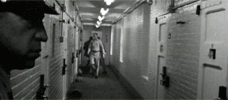
Titicut Follies
1967 -
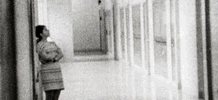
High School
1968 -

Law & Order
1969 -

Basic Training
1971 -
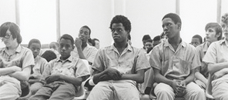
Juvenile Court
1972 -
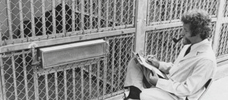
Primate
1974 -

Welfare
1975 -
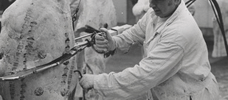
Meat
1976 -
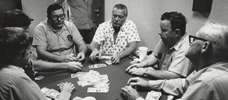
Sinai Field Mission
1978 -
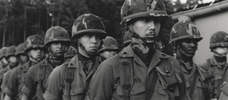
Manoeuvre
1979 -

Model
1980 -

The Store
1983 -

Blind
USA -

Adjustment & Work
1986 -

Missile
1987 -

Central Park
1989 -

Near Death
1989 -

Aspen
1991 -

Zoo
1993 -

High School II
1994 -

Ballet
1995 -

La Comédie-Française
1996 -

Public Housing
1997 -

Belfast, Maine
1999 -

Domestic Violence / Domestic Violence 2
2001 / 2002 -

The Last Letter
2002 -

State Legislature
2006
We don’t do comments anymore, but you may contact us here or find us on Twitter or Facebook.



